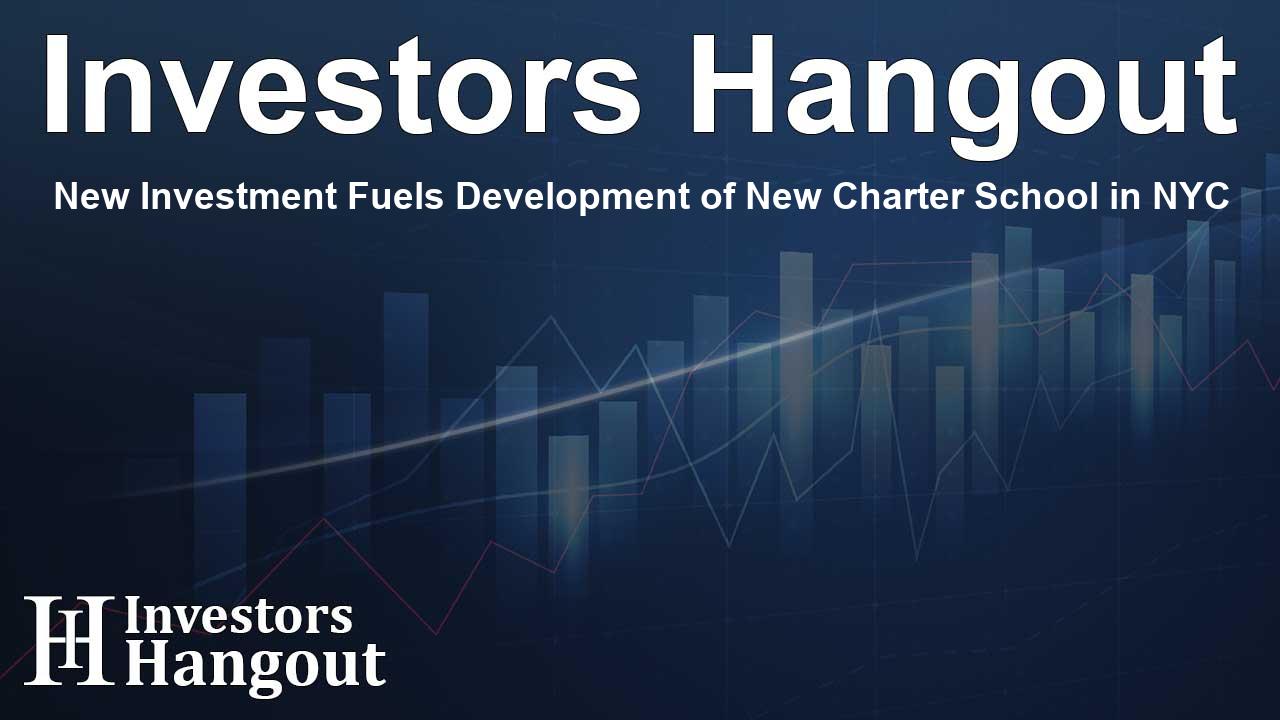New Investment Fuels Development of New Charter School in NYC

Investment Boosts Educational Infrastructure in NYC
The recent funding announcement reflects a significant commitment to enhance the educational landscape within the city. The New York City Regional Center has successfully closed a $19 million financing deal aimed at constructing a new charter school designed to accommodate 700 students.
Overview of Bold Charter School
This new school, known as Bold Charter School, will be a modern facility featuring 60,000 square feet of educational space, including 27 classrooms, breakout rooms, a dedicated art room, a music room, a cafeteria, a gymnasium, and several science labs. Bold Charter School aims to provide a nurturing environment for children in grades K through 8, ultimately empowering them to excel academically and personally.
Founded in 2019, Bold Charter School strives to create world-class public education experiences that prepare students beyond mere academic success. The mission centers around fostering strong character and leadership skills that equip students for purposeful lives.
Role of NYCR-CDE in Financing
The financing for this venture is made possible through the New Market Tax Credit program, an initiative designed to attract investment in economies facing significant barriers to entering robust financial markets. The $19 million from this latest transaction represents part of a more extensive $45 million New Market Tax Credit allocation awarded to NYCR-CDE by the U.S. Department of Treasury.
NYCR-CDE has become a powerful ally in transforming low-income neighborhoods through various funding initiatives, showcasing its capacity to drive meaningful change in communities that need it most. Since its inception, the entity has secured $315 million in funding through multiple tax credit awards, significantly impacting local economies.
Previously Funded Projects Demonstrating Impact
NYCR-CDE has previously directed investments into several high-profile projects that underscore its capability to revitalize urban settings. This includes the construction of the National Urban League's headquarters and significant redevelopment efforts in communities throughout the city. These undertakings have not only advanced infrastructure but also enhanced community engagement and opportunities for economic growth.
Among its prior projects, NYCR-CDE has facilitated the development of eight charter schools, including notable constructions amounting to millions in financing provided for institutions throughout the city. Each project affirms the organization's focus on providing quality educational opportunities while bolstering economic resilience.
Understanding the New Markets Tax Credit Program
Initiated by Congress in 2000, the New Markets Tax Credit Program was established to stimulate investing in economically distressed urban and rural areas. This innovative approach seeks to bridge the investment gap that hampers community development by offering tax incentives to private investors who deploy capital into struggling neighborhoods.
Such financial mechanisms enable communities to access jobs, housing, and critical services, contributing to overall improvements in the quality of life for residents. Historically, the program has demonstrated significant returns on investments; for every dollar of tax credits allocated by the government, private sector investment generates significantly more in economic activity.
As of today, the influx of $81 billion in investments has resulted in the construction or renovation of more than 259 million square feet of commercial real estate in low-income areas nationwide, effectively validating the efficacy of the program.
Contact Information
Those interested in learning more about NYCRC and its initiatives can find detailed resources on its website. With a commitment to promoting sustainable economic practices and enhancing educational infrastructure, NYCRC continues to make a lasting impact in communities rich with potential.
Frequently Asked Questions
What is the purpose of the New Markets Tax Credit program?
This program aims to spur investment in economically distressed areas to foster economic growth and job creation by offering tax incentives to investors.
How does Bold Charter School impact the local community?
By providing quality education for 700 students, it promotes academic growth and personal development in a supportive environment.
What has NYCR-CDE achieved in its funding efforts?
NYCR-CDE has successfully secured over $315 million in tax credits, significantly benefiting various community projects, including educational institutions.
When was Bold Charter School established?
Bold Charter School was established in 2019 and has been dedicated to building successful future leaders since its inception.
How many charter schools has NYCR-CDE supported to date?
NYCR-CDE has supported the construction of eight charter schools through its funding initiatives, positively affecting countless students and families.
About The Author
Contact Owen Jenkins privately here. Or send an email with ATTN: Owen Jenkins as the subject to contact@investorshangout.com.
About Investors Hangout
Investors Hangout is a leading online stock forum for financial discussion and learning, offering a wide range of free tools and resources. It draws in traders of all levels, who exchange market knowledge, investigate trading tactics, and keep an eye on industry developments in real time. Featuring financial articles, stock message boards, quotes, charts, company profiles, and live news updates. Through cooperative learning and a wealth of informational resources, it helps users from novices creating their first portfolios to experts honing their techniques. Join Investors Hangout today: https://investorshangout.com/
The content of this article is based on factual, publicly available information and does not represent legal, financial, or investment advice. Investors Hangout does not offer financial advice, and the author is not a licensed financial advisor. Consult a qualified advisor before making any financial or investment decisions based on this article. This article should not be considered advice to purchase, sell, or hold any securities or other investments. If any of the material provided here is inaccurate, please contact us for corrections.
